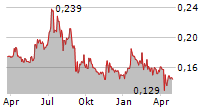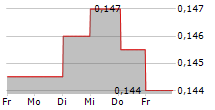Electromagnetic Geoservices ASA (the "Company" or "EMGS") releases information on vessel activity and multi-client sales during the quarter approximately 4-5 working days after the close of each quarter. The Company defines vessel utilisation as the percentage of the vessel charter period spent on proprietary or multi-client data acquisition. Downtime (technical or maritime), mobilisation, steaming, and some standby activities are not included in the utilisation rate.
At the end of the second quarter 2025 the Company had one vessel on charter, the Atlantic Guardian. The Atlantic Guardian completed the second of two proprietary surveys in India in the quarter and started transit back to Norway for three fully prefunded multi-client surveys in the North Sea with a total contract value of USD 2.7 million.
The utilization for the second quarter was 44% compared with 51% for the second quarter 2024.
EMGS had one vessel in operation and recorded 3.0 vessel months in the quarter. In the second quarter 2024, the Company recorded 3.0 vessel months.
Multi-client revenues in the second quarter
The Company expects to record approximately USD 200,000 in multi-client late sales in the second quarter of 2025.
EMGS will publish its second quarter 2025 financial results on Wednesday 13 August 2025 prior to 07:30 local time (Norway). A recorded presentation will also be made available over the Internet. To access the presentation, please go to the Company's homepage (www.emgs.com) and follow the link.
Contact
Anders Eimstad, Chief Financial Officer, +47 948 25 836
This information is published in accordance with the Norwegian Securities Trading Act § 5-12.
About EMGS
EMGS, the marine EM market leader, uses its proprietary electromagnetic (EM) technology to support oil and gas companies in their search for offshore hydrocarbons. EMGS supports each stage in the workflow, from survey design and data acquisition to processing and interpretation. The Company's services enable the integration of EM data with seismic and other geophysical and geological information to give explorationists a clearer and more complete understanding of the subsurface. This improves exploration efficiency and reduces risks and the finding costs per barrel. CSEM technology can also be used to detect the presence of marine mineral deposits (primarily Seabed Massive Sulphides) and in other offshore construction and exploration activity.



